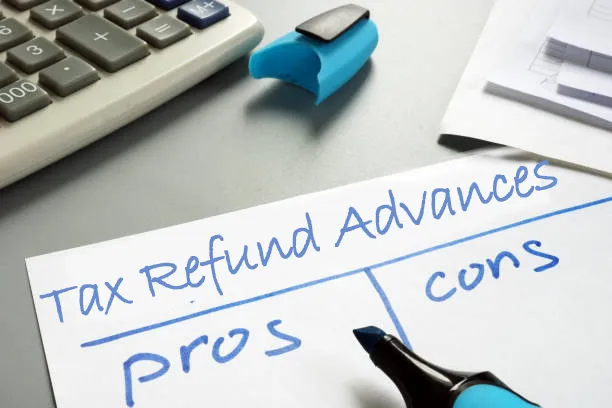Tax Preparation Dearborn and Auburnhills

As a freelancer, you're probably aware that tax season isn't just a once-a-year event; it's an ongoing responsibility that demands attention to detail. You're managing your own business and navigating the complexities of self-employment taxes and deductions. It's crucial to understand what must be done to avoid costly mistakes. Have you considered how meticulous record-keeping and estimating quarterly payments can impact your bottom line? There's also the question of whether to handle tax preparation independently or enlist professional help. These decisions can significantly affect your financial health.
Understanding Your Tax Obligations
As a freelancer, you must understand your tax obligations to avoid unwelcome surprises. You're responsible for handling your taxes, which includes understanding the self-employment tax. This tax covers your Social Security and Medicare obligations, typically around 15.3% of your net earnings. Unlike traditional employees, taxes aren't automatically deducted from your paychecks, so you'll need to estimate and make quarterly payments directly to the IRS.
Keep track of your income and expenses throughout the year, ensuring you report everything accurately. Knowing your state's specific tax requirements is crucial, as these can vary. Consider setting aside a portion of your income for taxes to prevent cash flow issues when payments are due.
Maximizing Tax Deductions
One of the most effective ways to reduce your tax liability as a freelancer is by maximizing your tax deductions. To do this, you'll need to understand what expenses qualify. Common deductible expenses include office supplies, software subscriptions, travel costs, and home office expenses. If you use your car for business, track mileage and related expenses. Don't forget about health insurance premiums if you pay them yourself, and any retirement contributions you make.
Keep detailed records of all business-related expenses throughout the year. Receipts, invoices, and bank statements are your best friends here. It's crucial to differentiate personal expenses from business ones to avoid red flags. By diligently tracking and claiming your deductions, you can significantly reduce your taxable income and keep more money in your pocket.
Organizing and Filing Taxes
Understanding how to maximize your tax deductions sets the stage for effectively organizing and filing your taxes as a freelancer. Begin by keeping meticulous records of your income and expenses throughout the year. Use accounting software or apps to track everything. Create a digital or physical folder for receipts and important documents, ensuring they're categorized and easily located. When it's time to file, decide whether to handle it yourself or hire a professional. If you're going solo, familiarize yourself with tax forms like Schedule C. Consider quarterly estimated tax payments to avoid penalties. Always double-check details before submitting, ensuring accuracy. Staying organized simplifies filing and minimizes stress, helping you focus more on your freelance work.
Check this: https://taxshieldservicepontiac.com/personal-and-business-tax-waterford

You've probably heard that tax planning is something you should start thinking about before the end of the year, but what if I told you that effective tax management requires a year-round approach? Understanding the nuances of tax brackets and strategically timing your income and investments can significantly mitigate your tax burden. The key isn't just in last-minute deductions but in a carefully considered strategy that spans the entire year. Curious about how you can make the most of your financial situation while staying compliant with ever-changing tax laws? Let's explore some strategies that may change your perspective.
Understanding Tax Brackets
Navigating the maze of tax brackets can feel daunting, but understanding them is crucial for effective tax planning. Tax brackets determine how much you owe the government based on your income level. They're progressive, meaning the more you earn, the higher your rate. But don't worry—only the portion of your income that falls into each bracket is taxed at that bracket's rate. For example, if you move into a higher bracket, only the income above the previous bracket is taxed at the new rate. Staying informed about current tax rates and thresholds can help you estimate your tax liability and plan accordingly. This way, you can avoid surprises come tax season and make informed financial decisions throughout the year.
Maximizing Deductions and Credits
Understanding Dearborn tax shield is just one piece of the puzzle regarding effective tax planning. To truly minimize your tax burden, focus on maximizing deductions and credits. First, familiarize yourself with available deductions, such as mortgage interest, student loan interest, and charitable contributions. Itemizing can significantly lower your taxable income, but only if the total exceeds the standard deduction.
Next, explore tax credits, which directly reduce the tax you owe. Popular credits include the Child Tax Credit, Earned Income Tax Credit, and education-related credits like the American Opportunity Tax Credit. Unlike deductions, credits offer a dollar-for-dollar reduction.
Stay organized with receipts and documentation to ensure you don't miss out on any opportunities. Regularly review tax laws for changes that could affect your eligibility.
Strategic Investment Planning
When considering strategic investment planning, aligning your investment choices with your financial goals and risk tolerance is essential. Start by identifying what you want to achieve—long-term growth, income generation, or preserving capital. Diversify your portfolio to spread risk across asset classes like stocks, bonds, and real estate. This not only helps manage risk but also maximizes potential returns. Consider tax-advantaged accounts, like IRAs or 401(k)s, to defer taxes and grow your investments faster. Regularly review your investment performance and adjust as needed, ensuring your strategy remains aligned with your objectives. Stay informed about economic trends and market conditions can guide your decisions, helping you optimize your investment strategy and minimize your tax burden.
Monitoring Changes in Tax Laws
Staying informed about changes in tax laws is crucial for effective tax planning. Tax codes can shift frequently, impacting deductions, credits, and overall tax liability. By monitoring these updates, you can adjust your strategies proactively, ensuring you're not caught off guard.
Subscribe to newsletters from reputable tax advisory services and follow updates from the IRS. Consider regularly meeting with a tax professional to discuss how these changes might affect your situation. They can offer insights into new opportunities for savings or highlight potential pitfalls to avoid. Being proactive means you're not just reacting to changes but using them to your advantage. Remember, knowledge is power, especially when minimizing your tax burden.

When considering a tax refund advance, focusing on immediate benefits, like quick access to cash without a credit check, is tempting. But have you considered potential drawbacks, such as fees, that might chip away at your refund? The decision isn't as straightforward as it seems, and weighing both the advantages and disadvantages is crucial.
What if there's a way to make an informed choice that aligns with your financial goals? Let's look at the dynamics of tax refund advances and discover how to navigate this financial option wisely.
Understanding Tax Refund Advances Auburnhills
Understanding tax refund advances auburnhills can be crucial for managing your finances effectively when tax season rolls around. A tax refund advance is a short-term loan offered by tax preparation companies. It's based on the amount of your expected tax refund. You can receive part of your refund faster without waiting for the IRS to process your return.
You typically need to file your taxes with a company offering this service to get one. They'll estimate your refund and provide you with an advance on that amount. Remember, this isn't free money. It's a loan that's repaid once your actual refund arrives. Be sure to understand any fees or interest rates that might apply, as they can vary between providers.
Benefits of Tax Refund Advances
Jumping into the benefits of tax refund advances, you'll find they can provide a financial lifeline in urgent situations. Whether you're facing unexpected expenses or need immediate cash flow, these advances can help bridge the gap until your official tax refund arrives. They offer speedy access to much-needed funds, usually within 24 hours of approval, which is a boon when time isn't on your side.
Moreover, there's often no credit check required, making them accessible if you're worried about your credit score. This ease of access can relieve stress, especially if bills pile up. Additionally, many providers won't charge interest or fees if you repay the advance by the due date, making it a cost-effective option for short-term financial relief.
Drawbacks to Consider
While tax refund advances offer several benefits, you should consider a few drawbacks before opting for one. First, these advances often come with fees that can affect your refund amount. If you delay repaying the advance, you might face interest charges, making it less cost-effective. Also, there's the risk of receiving a smaller refund than anticipated, which could leave you owing more than you borrowed.
Moreover, the application process can be cumbersome, requiring you to provide detailed financial information. Sometimes, you might need to open a new account with the lender, adding to your financial management tasks. Lastly, relying on advances could lead you to overlook better financial planning strategies, which might be more beneficial in the long run.
Making the Right Choice
Choosing the right tax refund advance is crucial to ensuring it benefits rather than burdens you. Begin by evaluating your immediate financial needs. If you're in a tight spot and can't wait for the IRS, an advance might be worth it. Next, compare offers from different providers. Look out for hidden fees or high interest rates that could outweigh the benefits.
It's wise to read the fine print carefully. Some advances are interest-free if you meet specific criteria, so be sure you qualify. Also, consider the reputation of the company offering the advance. Online reviews can provide insight into their reliability. Finally, weigh the urgency against potential costs. Being informed ensures you make a choice that aligns with your financial goals.